

tories thrive inside everyone. But how should emerging writers draw them out? No writer is born with trade-specific knowledge about how to excel in the publishing field; yet, every writer is born with the talent to make it happen. What’s the best path to follow? A reputable writer’s course is the logical place to begin; after all, knowledge opens doors to greater possibilities.
A first-rate course is Writing for Children and Teenagers, offered by the Institute of Children’s Literature. If anyone considers taking a course that covers all angles and genres of writing for children through young adults, then the Institute is the place to enroll. As a recent graduate of the course, I could tell readers to take my word for it. But my word alone wouldn’t be sufficient without explaining why it’s la crème de la crème in its field.
The Institute of Children’s Literature tops the review charts on eight criteria: market demand, instructional quality, course materials, course convenience, student services, track record, money-back guarantee, and overall investment.
MARKET DEMAND
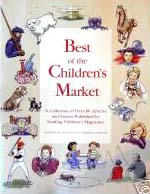
Is there a large enough market to justify a complete course? Without a doubt. Children's literature developed into a distinct field only a little over two centuries ago. Since then it’s grown into a vast marketplace. Book Markets for Children’s Writers 2007 advertises 568 updates for the year. In its sister publication, Magazine Markets for Children’s Writers 2007, 672 markets fill the list. Both texts serve as a gauge for market growth and change.
The Cooperative Children's Book Center (CCBC), a library of the School of Education at the University of Wisconsin-Madison, estimates 5,000 new books are published annually for the children and young adult markets. In the Children’s Writers’ and Artists’ Yearbook, Chris Kloet reports, “Around 10,000 new children’s titles are published in the UK every year.” She further states that, “The profile of children’s books has never been higher, yet it can be difficult for the first-time writer to get published.”
INSTRUCTIONAL QUALITY
Who are the instructors and what qualifies them to teach? The Institute has hired hundreds of instructors and they are all published authors, among other credits to their names. Cheri Levine from Student Services approximates 125 instructors. But more importantly, beyond the numbers, Ms. Levine reveals the hiring process. She states, “When we select new instructors at The Children’s Institute, we are interested in their background, education, work experience, publishing credits, and professional accomplishments that may benefit our students.” That’s only the first step. Next they endure personal interviews. Finally, “if all goes well, we begin the 12-month program of closely monitored training that is given to every new instructor, no matter how impressive his or her credentials may be. Each instructor must learn to teach to our standards.”
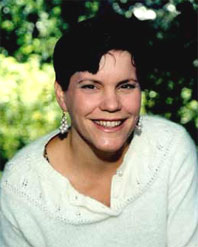
“...the Institute’s hiring measures attract high-level, qualified professionals.”
Instructor Pegi Deitz Shea adds an important note: “ICL only recruits authors who have published in the very particular business of children’s literature. This means they not only have the skill set needed to publish, they have the drive, marketing know-how, contacts, and sheer experience under their belts.” Overall, the Institute’s hiring measures attract high-level, qualified professionals.
The Institute discloses more details on their website. The instructors “have written and edited well over 3,000 books and 29,000 stories or articles. Their work has won virtually every award, prize, and honor the field of juvenile literature has to offer.”
The cumulative effect of their instructors’ talents adds up to a strong foundation. Of course, colleges and universities hire highly-qualified instructors and professors, too; but they can’t rival the system presented by the Institute, particularly in terms of the student-to-teacher ratio.
The Institute matches each student with an instructor who can best meet her (or his) needs and interests. Placement hinges upon a student’s writing preferences, whether they fall into fiction or nonfiction, magazine or book writing, or some combination. I was placed with an exceptional instructor in the beginning. My only inconvenience occurred through the number of placements. But I can’t consider it to be a criticism by any means.
Initially, I was placed with a talented author who managed to send me her biography and introduce me to the course as well as the first assignment. Within a few weeks, however, I received word that she would no longer be my instructor. Why? She was going on a book-signing tour, and she had no choice but to leave her instructorship in order to advance her primary career.
Later in my enrollment, near the end of the course, I experienced a similar event with my second instructor, who also had to leave her position to fulfill other duties as an author. In the eight months I spent in the course, I was placed with three different instructors. Of course, I could hardly deem this experience as negative. I realized that the Institute’s instructors are actively involved in writing and publishing. More than anything my initial frustration turned into a beacon of possibility. If the instructors are so successful, then one day any number of their students could be, too.
Pegi Deitz Shea was my third instructor, and she coached me through my tenth and final assignment. She stepped up to the plate in the end, reviewed all my previous coursework, and gave me thorough and constructive criticism. Even though I rolled through three instructors, I graduated with advice from pros on every piece of writing.
Ms. Shea represents a prime example of the sophisticated instructors at the Institute. In regard to her background, she states, “I have published 13 children’s books—poetry, fiction and nonfiction—for every age group. Many of the books are multicultural. For adult readers, I’ve published more than 350 articles and poems.”
I discovered that she’s also won awards from the National Council of Teachers of English, the National Council for the Social Studies, Children’s Book Council, the International Reading Association, and more. Obviously, Ms. Shea brings a well-rounded background to the teaching table. As a result, she manages to provide effective feedback to all of her students while guiding them along the path to publishing.
Of course, in addition to their expertise, the Institute’s instructors have access to quality materials with which to teach the course.
COURSE MATERIALS
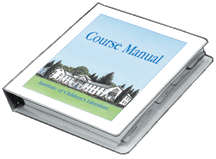
Quality instruction requires quality materials. One can’t thrive without the other one. The Institute provides those materials. Upon acceptance into the course, students receive Part I of the 508-page course manual, which covers the first three assignments and all angles from which writers can approach them. Before the fourth assignment, students receive Part II, the fourth through the seventh assignments. Part III, “Writing for the Market,” concludes the course with the last three assignments and three appendices.
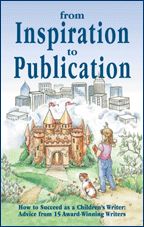
Throughout the course, students rely on several additional books provided for them: Best of the Children’s Market, the Institute’s exclusive anthology of 84 stories and articles carefully selected from 49 leading children’s magazines; From Inspiration to Publication, a text drawn from over 30 years of teaching the course; Essentials of English, to help sharpen craft skills; and Searching, a unique guide to writers’ research resources. In regard to the texts, Ms. Shea adds, “I think its marketing guidance and its marketing guides are far above any other program. Lots of people write. But many don’t know how to get it out there professionally. ICL equips them and supports them.”
Their texts and materials cover all angles of writing, making the course straightforward and convenient.
COURSE CONVENIENCE
Even though the Institute is located in a gorgeous mansion in Connecticut, its savvy website provides a global gateway into the course, and it has the capacity to provide more instruction than a physical classroom environment. In classrooms, students and instructors are limited by pre-designated meeting times and physical classrooms. In a long-distance or cyberspace-based learning environment, the only limitations originate from the students.
“It’s ideal for many remotely located writers.”
The course is designed for anyone interested in writing, including parents, working professionals, or individuals who require flexibility. Ms. Shea says, “It’s ideal for many remotely located writers.” Plus, she’s instructed people with learning disabilities, prisoners, soldiers, and soldiers’ wives. She concludes that it’s also “good for people nervous about showing their work to others, yet crave feedback and marketing help.”
If she’s taught such a diverse group of writers, imagine the diversity of writers reached by the Institute as a whole. The course can reach everyone.
Writing for Children and Teenagers requires approximately 220 hours of work to complete. Students are allotted up to two years to finish the course, but extensions are permitted at no extra cost. Jan Fields, Instructor and ICL Web Editor, sums it up: “Students get ‘deadlines’ for assignments but the Institute is pretty flexible for giving deadline extensions for students who find themselves too caught up in ‘life’ for awhile. That’s probably the biggest benefit of distance learning, it really can just adapt to the need of each person.”
Whenever students have concerns, problems, or personal issues that cut into their writing assignment time, they need only contact the Institute to ask for help, advice, or deadline extensions.
STUDENT SERVICES
Students may contact Student Services via email, snail mail, or telephone. According to Ms. Levine, Student Services is dedicated to one purpose: helping the students in any regard. She states, “Any one of a number of counselors in Student Services is trained to assist students with any aspect of the course, the textbooks, teaching materials, and assignments.”
“They were so helpful. No student should feel they can’t call them; they are awesome!”
Plus, students can contact any one of the counselors for assistance with personal issues that might affect their work. The counselors provide immediate reassurance.
Student Chynna Laird contacted a counselor with a personal issue when she had to take a Leave of Absence. She says, “They were so helpful. No student should feel they can’t call them; they are awesome!” On the other hand, student Kesha L. Grant had a different matter to resolve. Originally, she was enrolled in the sister course on writing for adults, Breaking into Print (BIP), offered through the Long Ridge Writers Group. Both courses share the same Student Services. Ms. Grant writes, “I found them to be very helpful. The last time I contacted them was to change programs—from BIP to ICL. Student Services explained the process to me, helped me select a new instructor, transferred my funds to the new program, and mailed my new materials.
I didn’t miss a beat.”
The Institute nurtures its students with finesse. Of course, they should; they’ve had over three decades of practice.
TRACK RECORD
The Institute opened its doors for business in January 1969. It’s been a member of the Better Business Bureau since December 1976, which means that it supports the Bureau’s obligations to the public as well as its membership standards. It holds a satisfactory record with the Bureau. In the last three years, the standard reporting period, the Bureau has processed only four complaints. Of those, three issues were resolved and the fourth was closed. In this last case, the Bureau decided that the Institute had “made a reasonable offer to resolve the issues, but the consumer did not accept the offer.” Of course, we can’t possibly know the situation, but knowing the Bureau is involved only strengthens the Institute’s public standing in both the business and educational communities. Four incidents over a three-year-period is a phenomenally low number.
“...simply request a refund within 60 days of the date on your diploma and you will get back every penny you’ve paid.”
MONEY-BACK GUARANTEE
Beyond its membership and track record with the Better Business Bureau, the Institute offers a formal promise to all students: “Whatever your writing objective may be, if you pass our Writing Aptitude Test and enroll in Writing for Children and Teenagers, we will help you achieve it. This is our promise: You will complete at least one manuscript that is suitable to submit to an editor by the time you finish the course.”
If a student finishes the course unsatisfied, even if it takes two years or more, the Institute will provide a full refund: “If you are not satisfied that you have become a better writer and learned how to market your writing to editors and publishers, as a result of completing our course, simply request a refund within 60 days of the date on your diploma and you will get back every penny you’ve paid.” That’s the best kind of satisfaction guarantee.
OVERALL INVESTMENT
The Institute of Children’s Literature tops the review charts on all eight criteria. In its 38 years of teaching, the Institute has created a successful system, hired the right professionals to do the job, and placed students as their highest priority. From all the positives, it sounds like the course would be ultra expensive. But it’s not. The course is priced in line with a community college’s course tuition; yet, students get a lot more for their money. It doesn’t get any better. Actually, it does.
Ms. Fields adds: “the eNews, the online chats, and the articles are open to everyone, not just students. ICL’s website can give new writers a lot of help even if they never take a single course. Of course, the Institute wants students, but our primary driving focus is helping.”
The Institute is run by eloquent and eager-to-teach professionals, and the website thrives as a portal to a writer’s world of information.
The knowledge that students acquire from the Institute opens doors to greater possibilities. Maya Angelou’s words tell us that “There is no greater agony than bearing an untold story inside you.” Writers who wish to learn how to draw their stories out into the world should enroll in the Writing for Children and Teenagers course; every emerging writer deserves guided knowledge.
The first step—the aptitude test—is clear-cut and free. If students pass, the next step across the welcome mat will be the first of many positive changes.
~~~~~~~~~~~~
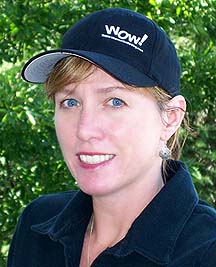
Sue’s Bio:
Sue Donckels is co-editor for WOW! Women On Writing. In her free time, she continues to use the Institute’s 508-page manual and text books for story and article writing, reference, and submissions. They’ve become permanent additions to her “most-often-used-books” shelf. No dust collects on that one.